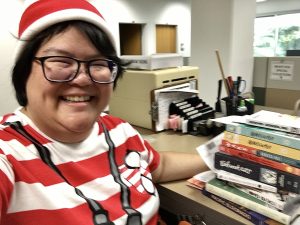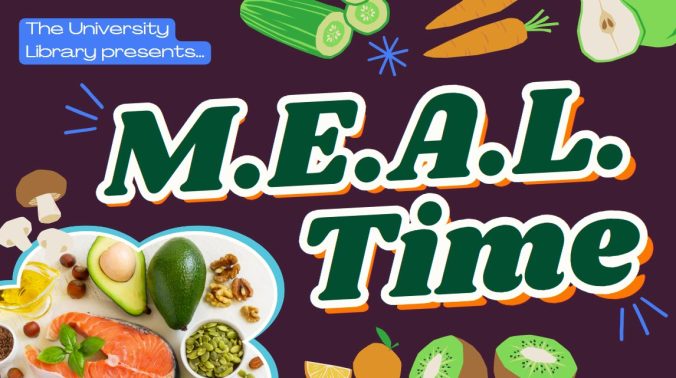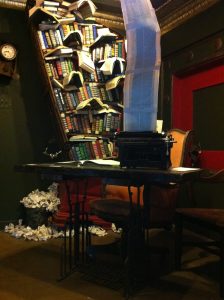This post is not related to any assignment. I just want to talk about REPAIR Lab because I’ve been referencing it all term and I’ve had some questions about it.
So, what is REPAIR Lab?
REPAIR Lab is an acronym for Repair, Processing, and Items Restoration Lab.
We are part of the technical services backstage side of library services. We are probably the most economical unit as we provide a broad range of services including bindery, processing, and repair that form one of the basis of collection management and maintenance. The work that we do is 100% customizable to the object and to the project. We are purpose-driven and user-focused. We believe in using sustainable and fiscally responsible practices, so we are champion at creative upcycling. And despite popular belief that book repair is anachronistic work, we are future forward. When we repair, we think about our future counterparts and how an item may be used in the future. Will this procedure be reversible? What should we use to make this repair reversible? How will this technique affect the longevity? We work for the whole library in support of the greater library mission.
We turn a run-of-the-mill book, CD, DVD, map, magazine, folio, poster, kit, etc. into a functional library item. We add the property stamps, barcodes, call number labels, security strips, pockets, protective mylar, etc., so that each item is discoverable in the catalog, findable on the shelf, and borrowable at the counter (or kiosk). We support affordable learning initiatives by expediting the processing of Course Reserves materials. Our turnaround time for Course Reserves materials is 48 hours because we do not want students to wait a long time for a much needed course textbook. When a new collection is endowed, we determine the processing rules and make the materials ready for shelving or display. In the end, when all those items are no longer new, suffer from shelf wear, or are returned damage, REPAIR Lab students and staff are the ones that fix it.
The students of the REPAIR Lab team are an amazing crew. They primarily work with books. As skills increase, the breadth and age of the books increase. To be able to stabilize a failing book, they learn everything from book terminology to the history of paper to bookbinding and book construction through time. We designed the program to be an apprenticeship-style program because every task builds on the previous and each task requires a micro-lesson, a demonstration, a test book, and much repeated practice. For example, the first lesson after book terminology involves preparing books for disassembly by removing old tapes and labels. Removing labels requires a lesson on the various materials used to make book covers. Is it coated paper? Is it laminated? Is it cloth covered boards? What kind of cloth is it? Once the material is determined, then the student will know whether they need a blade, a scraper, a spatula, an electric eraser, a heat source, solvent, or a combination of the aforementioned.
Oh, did I mention they also get routinely quizzed, have annual assessment exams, and when they are ready, a promotion exam? Do you want to see what one of their quizzes look like? Here’s their book terminology quiz. It sounds intense for student work (and it can be), but they also have fun. REPAIR Lab conversations are rarely boring and we celebrate each other’s successes. I think it may be difficult to imagine much of what we do unless you have previous experience in technical services or preservation, so please check out my LibGuide about REPAIR Lab for added details and photo gallery. Enjoy!
Feel free to ask me any and all questions that may come to mind. I’m always willing to talk about the amazingness of my students and fellow colleagues. And on a personal note, if after viewing the LibGuide you have any suggestions for improvement, I’d love to hear those, too!
All the best, Bookoni_VPN

Your classmate Bookoni_VPN dressed as Waldo unpacking a comics and graphic novels shipment.


